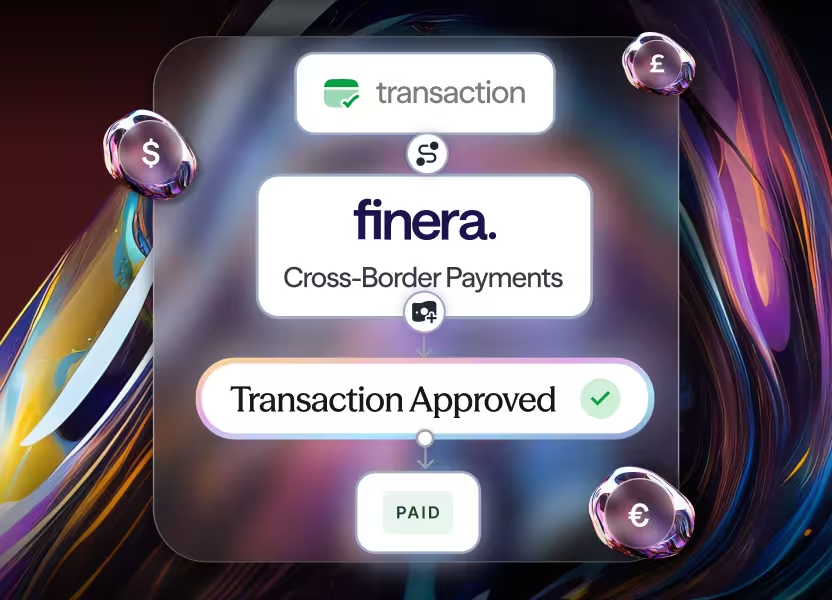How to Evaluate Your Payment Infrastructure Readiness
Learn how to assess and optimise your payment infrastructure readiness.

Is your payment infrastructure ready for growth?
Every digital business wants to scale. But as payment volumes grow, complexity grows faster.
Multiple payment service providers, gateways and acquirers are added to keep up with customer demand but visibility often drops, costs can rise and every integration starts feeling heavier than the last.
That’s when merchants realise that growth depends on payment infrastructure readiness, the ability of your payments setup to handle higher volumes, new markets and changing regulations efficiently.
A “ready” infrastructure doesn’t just process transactions. It adapts, optimises, and scales resiliently under pressure. It gives businesses control, flexibility and intelligence across your payment flows.
Let’s break down the key signs your payment infrastructure might not be ready for what’s next and how payment orchestration technology helps solve them.
Before You Scale: Two Realities About Payment Infrastructure
1. Growth Exposes Weak Foundations
When transaction volumes are low, many payment setups appear to work just fine. But growth is a pressure test. More customers, more geographies and more payment methods all introduce operational strain. What felt “good enough” quickly becomes a bottleneck. Systems can slow down. Approval rates may fluctuate. Fraud management becomes reactive instead of controlled. Teams end up firefighting instead of scaling.
In fact, according to IBM’s Financial Services and FinTech research, 64% of merchants report operational or technical failures with their payment systems in emerging markets, underscoring how scaling can expose weak infrastructure.
Revenue is rarely lost due to a single major failure. Instead, it's quietly eroded by countless small inefficiencies.
Scaling payments is not just about handling more transactions but about maintaining and improving performance as complexity rises.
2. Flexibility Matters as Much as Performance
Many merchants optimise for speed or cost but often overlook adaptability. Markets shift, regulation evolves and payment preferences change fast, especially for global or high-growth industries. Infrastructure that cannot adjust quickly forces businesses into long integration cycles, long vendor queues or limited payment options for customers. The result? Missed markets, slower launches and lost revenue to competitors who can move faster.
True readiness means staying agile, ready to plug into new providers, new geographies and new payment experiences without slowing innovation.
Key Warning Signs Your Payments Infrastructure May Limit Growth
Sign 1: Lack of Visibility and Control Across Providers
When something goes wrong, a failed payment, sudden latency or unexplained decline spike, do you know why?
Many merchants manage multiple payment partners but have limited unified oversight. Each PSP has its own dashboard, reporting structure and performance metrics. The result is fragmentation. You struggle to see the full picture, connect trends and optimise based on data.
This lack of visibility leads to:
- Missed performance issues and downtime trends.
- No clear understanding of decline reasons.
- Inefficient cost management and delayed decision-making.
Sign 2: Slow Integrations and Limited Agility
In high-growth environments, speed is critical. Expanding into new markets or adding new payment methods shouldn’t take months, yet for many merchants, it still does. Each new PSP integration often means heavy technical work, lengthy testing and coordination across multiple teams.
This delay can limit how quickly businesses can respond to market opportunities or customer demand. And in regions like APAC or LATAM, where preferred local methods vary widely, slow integrations can directly translate into lost conversions.
Sign 3: Inefficient Routing and Rising Processing Costs
Routing decisions might seem minor, but they make or break your payment performance.
If every transaction goes through a fixed acquirer, you are likely overpaying and underperforming.
Each region, card type and customer profile behaves differently and not all acquirers perform equally. Without smart routing, you risk:
- Higher decline rates for international transactions.
- Unnecessary cross-border fees and FX conversions.
- Slower settlement times and lower margins.
Sign 4: Fragmented Reporting and Manual Reconciliation
Data fragmentation is one of the most common pain points for finance teams.
When reports come in from different PSPs and acquirers, each with its own format and timing, reconciliation can become a manual, time-consuming process. Teams end up spending hours matching settlements, chasing discrepancies and waiting for reports before making decisions.
This slows down performance analysis and hides valuable insights. By the time issues are identified, they’ve probably cost you money.
Sign 5: Limited Scalability and Risk Management
The true test of payment readiness isn’t when everything runs smoothly but when pressure hits. Peaks in demand during holiday seasons, a major product launch or entering a new market can all expose cracks in your setup. If your stack relies on a single acquirer or lacks automatic failover, even a brief outage can translate into thousands in lost revenue.
This pressure isn’t only about uptime. Fragmented systems can weaken risk controls too. Fraud signals can get missed (or often get missed) between providers and staying aligned with changing compliance requirements becomes harder when every integration behaves differently.
As payments scale and organisations grow, teams need a shared language and a clear understanding of each layer, from routing logic to settlement flows, to operate efficiently and move faster.
Want to build that foundation? Explore our Glossary of Payment Orchestration Terms (2025 Edition) to get aligned on the key concepts that matter most.
How Payment Orchestration Technology Helps
Payment orchestration technology gives businesses the control and flexibility traditional setups lack. Instead of switching between PSP dashboards or managing fragmented data, companies gain a real-time view of all transactions and providers in one place. This improves decision-making and helps teams quickly spot issues like approval rate drops or processor downtime. Expansion becomes faster, where new PSPs, acquirers, APMs, or geographies can be added without months of engineering work, allowing business teams to move at market speed. Smart routing optimises transactions automatically, sending each payment to the best-performing provider to increase success rates and reduce fees. When something fails, the system automatically retries via another route, minimising lost revenue and customer frustration. Combined, these capabilities create a payment stack that is flexible, scalable and built for long-term growth.
Ready to Optimise Your Payments?
If your current setup makes scaling harder instead of easier, it’s time to re-evaluate your payment infrastructure readiness. At finera., we help merchants turn payment pain into peace of mind, with smarter technology built for growth and next-generation payment orchestration technology. By connecting intelligence to every transaction, we help you move faster, spend smarter, and scale efficiently.
Talk with our team and learn how we help optimise your payment infrastructure.
Frequently Asked Questions

Still Have Questions?
Let’s Find the Right Solution for You
Stay Connected with Us!
Follow us on social media to stay up to date with the latest news, updates, and exclusive insights!









